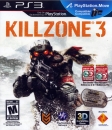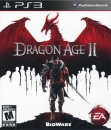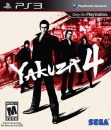http://www.eurogamer.net/articles/df-hardware-nintendo-wii-u-review
"
Nintendo Wii U - the Digital Foundry verdict
So does the next-gen really start now? We would suggest not. True to form, Nintendo has adopted its own approach to the HD revolution that engenders feelings of both delight and disappointment. Back in April 2011, when "Project Café" was first announced, we speculated that the hardware make-up of the machine would be modest by today's standards - that there may well be cross-platform games that fall short of the standard set by the now-vintage current-gen consoles. We'll be looking at the ports in more depth across the coming days and weeks in a series of Face-Off updates, but day-one impressions from the US launch appear to lend weight to our original assessment. Bearing in mind the general level of performance we've seen from the £300 Digital Foundry PC - built using off-the-shelf parts - it's a touch disappointing that graphical quality in Wii U shows no generational leap at all over the Xbox 360 or PlayStation 3. The DFPC is in the same ballpark price-point as Wii U, it features superior CPU/GPU power, twice as much RAM and much more storage. The notion that Nintendo could not match or better it in an integrated design bearing in mind the vast buying power it has at its disposal - even factoring in the additional cost of touch-screen GamePad - is disappointing. In a world where Chinese manufacturers can sell complete Android tablets with capacitive touch-screens for £50, it's safe to say that the Wii U GamePad won't be costing Nintendo too much to construct. That being the case, factoring in the modest processing power on offer, we were firmly of the belief that the platform holder would be targeting a £199/$299 price-point for Wii U. Sadly, it was not to be. From what we've experienced of the hardware and games thus far, the new console definitely feels a bit pricey, bearing in mind the gaming proposition on offer. Software quality will undoubtedly improve over the coming months, but with Microsoft and Sony looking to launch their own next-gen consoles within the year, time is not exactly on Nintendo's side. One developer working on a key AAA franchise port told us anonymously that the Nintendo toolchain is "fighting us every step of the way", suggesting that plenty of work still needs to be done in getting development workflow up to scratch. Will the tools improve in time? Will publishers have the time and the financial incentive to stick with it? Of course, this is a Nintendo console and so horsepower comparisons with current-gen machines are not the be-all and end-all - Wii U is a console product with unique properties, after all, where once again it's all about the controller - but the problem facing the platform holder is that none of its launch titles offers the same kind of beguiling mainstream experience that Wii Sports did back in 2006. New Super Mario Bros. U is a joyous, beautiful game with a combination of art and gameplay direction that only Nintendo can produce, but it makes no real innovative use of the GamePad's unique properties at all. Nintendo Land has the same level of untouchable production values, and comes across as a vast melting pot of cute ideas that by and large are a joy to explore, but it seems less likely to become a system seller by itself.
Perhaps the problem is that human beings have just one set of eyes. Many of the mini-games have you constantly shifting focus between the two screens, to the point where the software is actually telling you where to look. It feels forced and unnatural, and in many cases it just doesn't work. It's telling that it's the multiplayer Nintendo Land offerings - where the GamePad gets its own discrete view - that work best. It's a logical use for the second screen (which explains why Mario has the same functionality), but it's not a must-have, console-defining feature. What Wii U's first-party exclusives do provide, however, is a first look at how some of the greatest games designers in the world might utilise more modern hardware than we found in the original Wii, and in this respect Nintendo's new console delivers, because its first HD offerings are enjoyable, beautiful games that undoubtedly have a unique appeal to gamers of all ages. What's more, the quality of these unique, untouchable games will only get better as the Wii U matures. Nintendo is the Pixar of video games, and despite the odds stacked against the console, for many prospective buyers, that in itself will be more than enough. " |
That's just the ending. The entire review is pretty big.



















